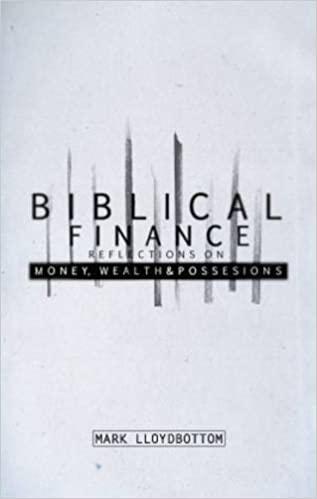



On January 1, Year 9, P Corp. acquired 75% of S Corp. for $1,500,000. P uses the cost method to account for its investment in S. On January 1, Year 9, S's retained camings and common shares were $600,000 and $220,000, respectively. S's book values did not differ materially from its fair values on the date of acquisition with the following exceptions: Inventory had a fair value that was $50,000 higher than its book value. A patent (which had not previously been accounted for) was identified on the acquisition date with an estimated fair value of $20,000. The patent had an estimated useful life of 5 years. + The Financial Statements of P Corp. and S Corp. for the year ended December 31, Year 20 are shown below: Income Statements P Corp. S Corp. Sales $1,000,000 $600,000 Other Revenuese $600,000 $240,000 Less: Expenses Cost of Goods Solde Depreciation Expense $800,000 $480,000 $40,000 $20,000 Other Expenses $160,000 $80,000 Income Tax Expensee $240.000 $104,000 Net Income $360,000 $156,000 Retained Earnings Statements + P Corp. S Corp. Balance, January 1, Year 20 $400,000 $700,000 Net Income $360,000 $156,000 Less: Dividendse (S60,000) S76,000 Retained Earnings $700.000 $780,000 Balance Sheets: e P Corp. S Corp. Cashe $289,250 $50,000 e Accounts Receivable $500,000 $500,000 Inventory $100,000 S550,000 Investment in S Corp. $1,500,000 Investment in S Corp. bonds $60,750 Lande $50,000 Equipment $1,000,000 S450,000 Accumulated Depreciation ($500,000) ($300.000 Total Assets $3,000,000 $1.250,000 Current Liabilities $1,300,000 $119,000 Bonds Payable S150,000 ($19,000) Less: Bond Discounte Common Shares $1,000,000 S220,000 Retained Earnings $700.000 $780,000 Total Liabilities and Equity $3,000,000 $1,250,000 Other Information: S sold a tract of land to Pat a profit of $20,000 during Year 19. This land is still the property of P Corp. On January 1, Year 20. S sold equipment to P at a price that was $20,000 lower than its book value. The equipment had a remaining useful life of 5 years from that date. On January 1, Year 20, S's inventories contained items purchased from P for $120,000. This entire inventory was sold to outsiders during the year. Also during Year 20, S sold inventory to P for $30,000. Half this inventory is still in P's warehouse at year end. All sales are priced at a 20% mark-up above cost, regardless of whether the sales are internal or external. There was a goodwill impairment loss of $10,000 during Year 19. Both companies are subject to an effective tax rate of 40%. Both companies use straight line amortization exclusively. a) Compute the Goodwill on the date of the acquisition On January 1, Year 9, P Corp. acquired 75% of S Corp. for $1,500,000. P uses the cost method to account for its investment in S. On January 1, Year 9, S's retained camings and common shares were $600,000 and $220,000, respectively. S's book values did not differ materially from its fair values on the date of acquisition with the following exceptions: Inventory had a fair value that was $50,000 higher than its book value. A patent (which had not previously been accounted for) was identified on the acquisition date with an estimated fair value of $20,000. The patent had an estimated useful life of 5 years. + The Financial Statements of P Corp. and S Corp. for the year ended December 31, Year 20 are shown below: Income Statements P Corp. S Corp. Sales $1,000,000 $600,000 Other Revenuese $600,000 $240,000 Less: Expenses Cost of Goods Solde Depreciation Expense $800,000 $480,000 $40,000 $20,000 Other Expenses $160,000 $80,000 Income Tax Expensee $240.000 $104,000 Net Income $360,000 $156,000 Retained Earnings Statements + P Corp. S Corp. Balance, January 1, Year 20 $400,000 $700,000 Net Income $360,000 $156,000 Less: Dividendse (S60,000) S76,000 Retained Earnings $700.000 $780,000 Balance Sheets: e P Corp. S Corp. Cashe $289,250 $50,000 e Accounts Receivable $500,000 $500,000 Inventory $100,000 S550,000 Investment in S Corp. $1,500,000 Investment in S Corp. bonds $60,750 Lande $50,000 Equipment $1,000,000 S450,000 Accumulated Depreciation ($500,000) ($300.000 Total Assets $3,000,000 $1.250,000 Current Liabilities $1,300,000 $119,000 Bonds Payable S150,000 ($19,000) Less: Bond Discounte Common Shares $1,000,000 S220,000 Retained Earnings $700.000 $780,000 Total Liabilities and Equity $3,000,000 $1,250,000 Other Information: S sold a tract of land to Pat a profit of $20,000 during Year 19. This land is still the property of P Corp. On January 1, Year 20. S sold equipment to P at a price that was $20,000 lower than its book value. The equipment had a remaining useful life of 5 years from that date. On January 1, Year 20, S's inventories contained items purchased from P for $120,000. This entire inventory was sold to outsiders during the year. Also during Year 20, S sold inventory to P for $30,000. Half this inventory is still in P's warehouse at year end. All sales are priced at a 20% mark-up above cost, regardless of whether the sales are internal or external. There was a goodwill impairment loss of $10,000 during Year 19. Both companies are subject to an effective tax rate of 40%. Both companies use straight line amortization exclusively. a) Compute the Goodwill on the date of the acquisition










